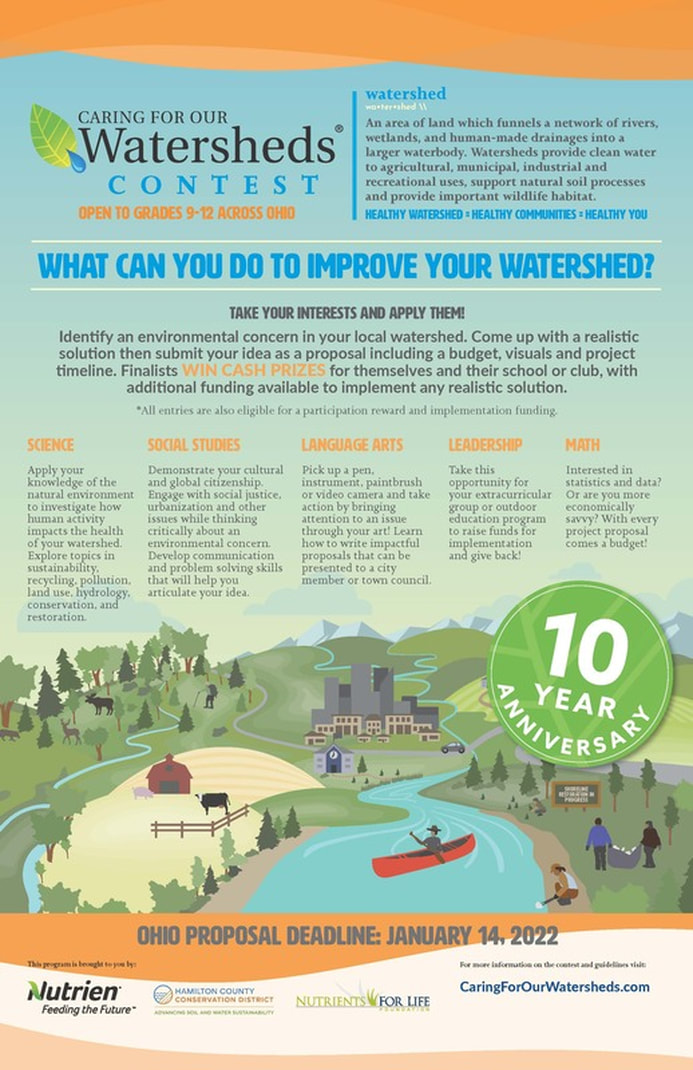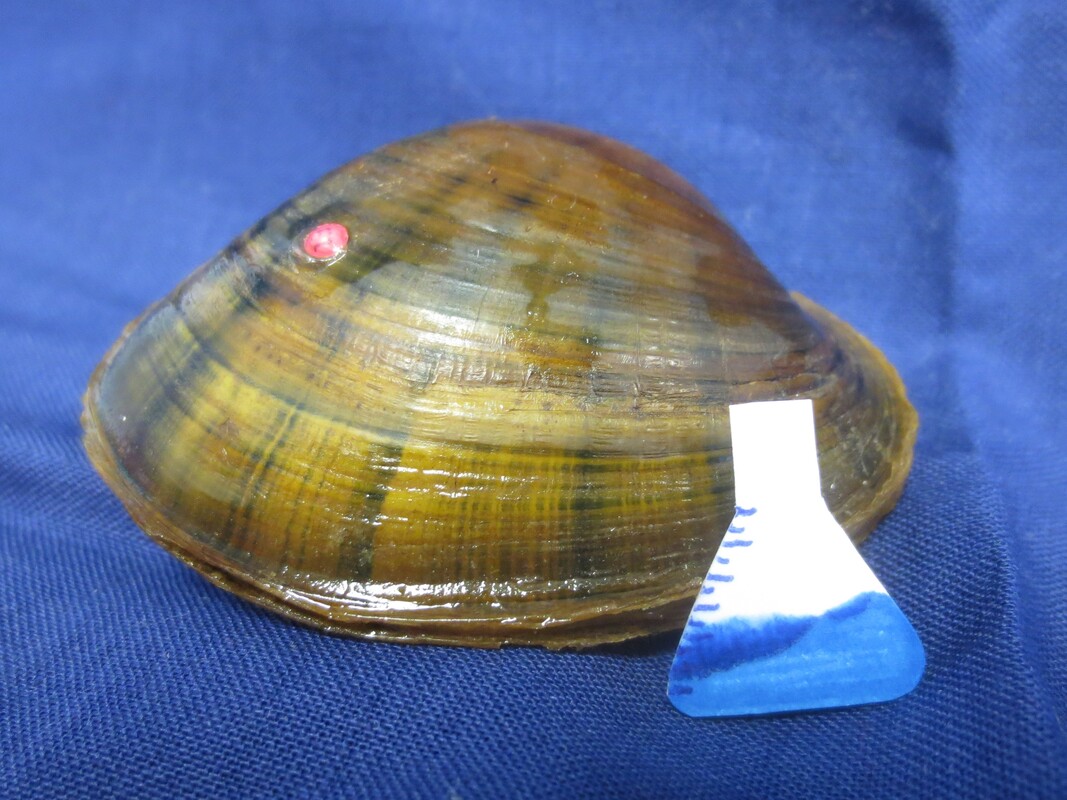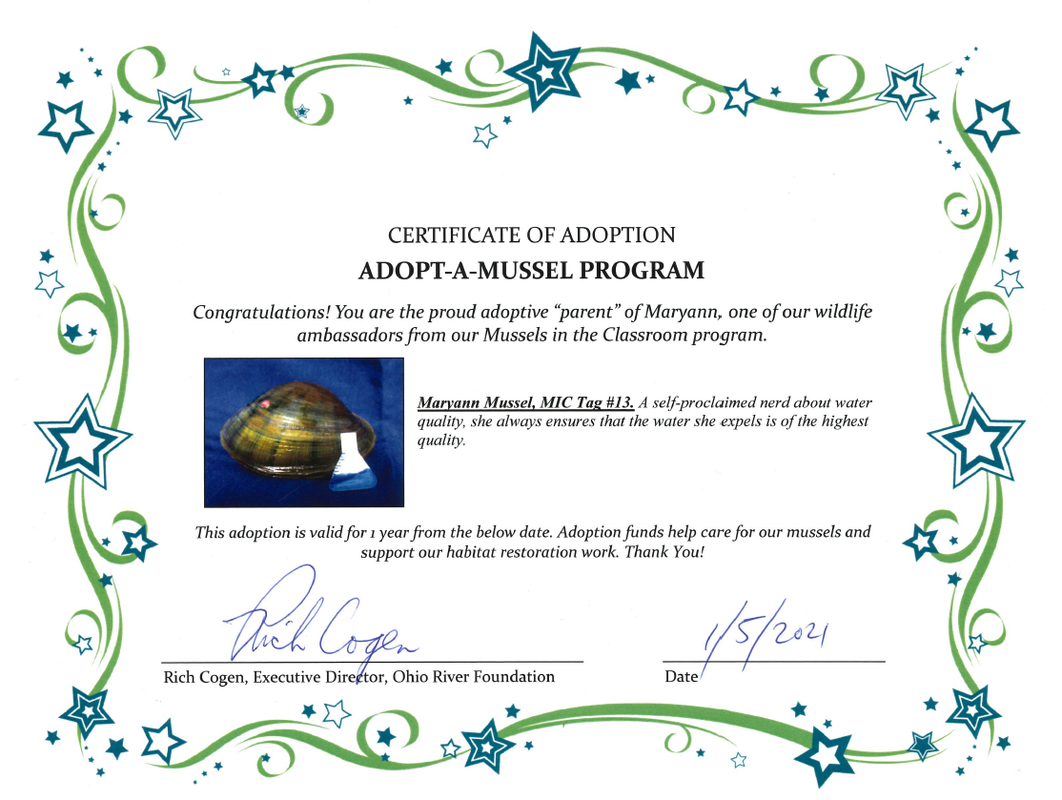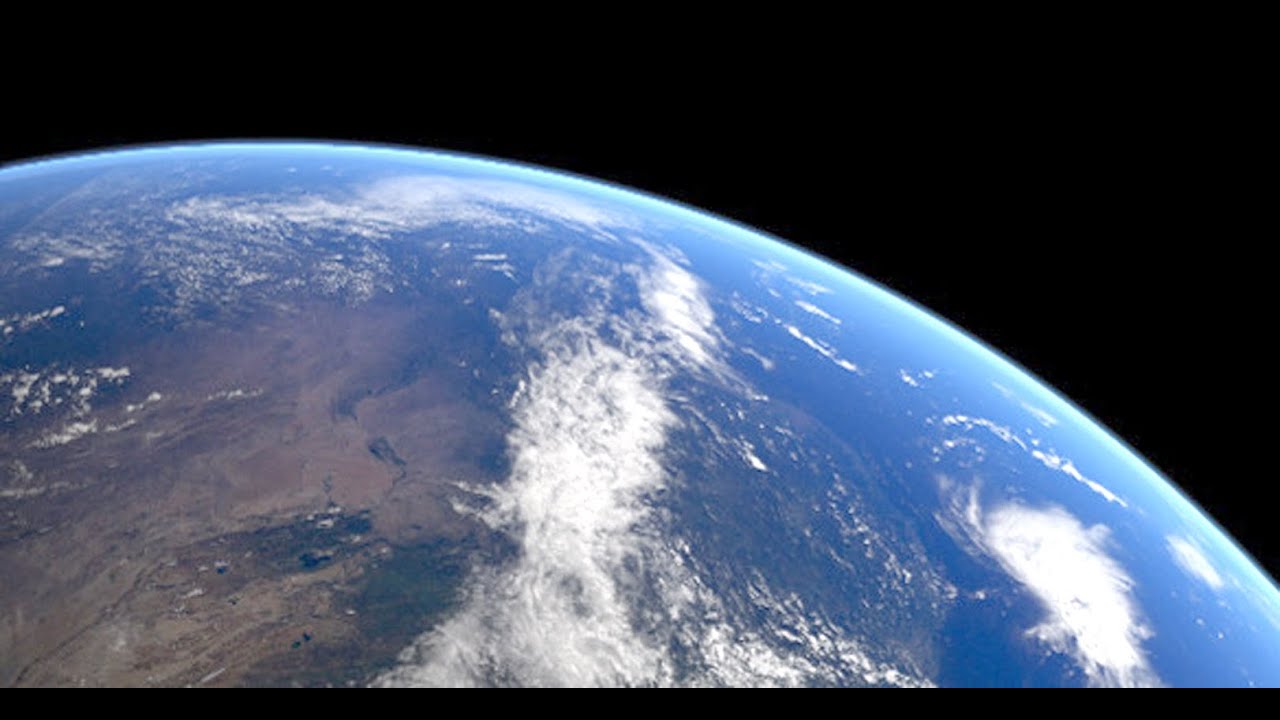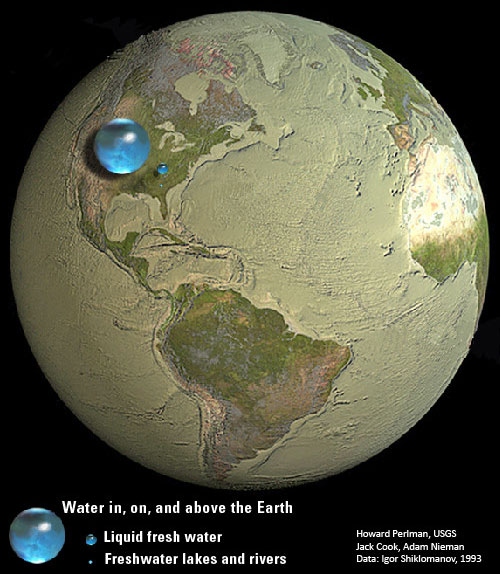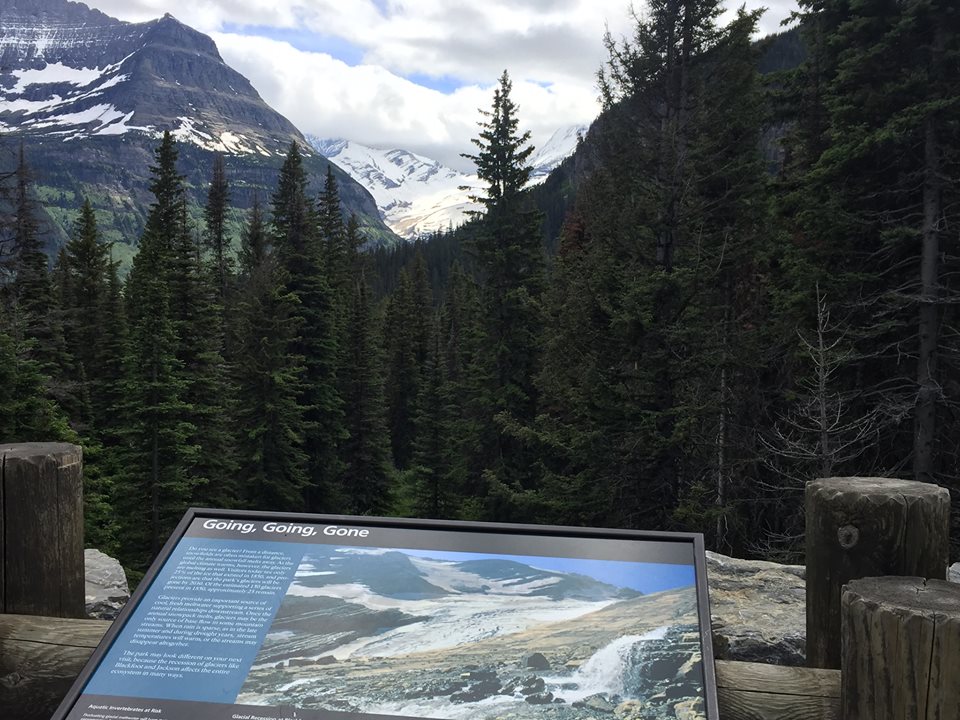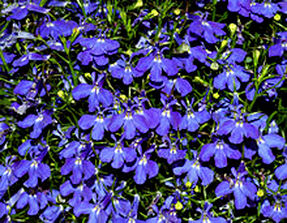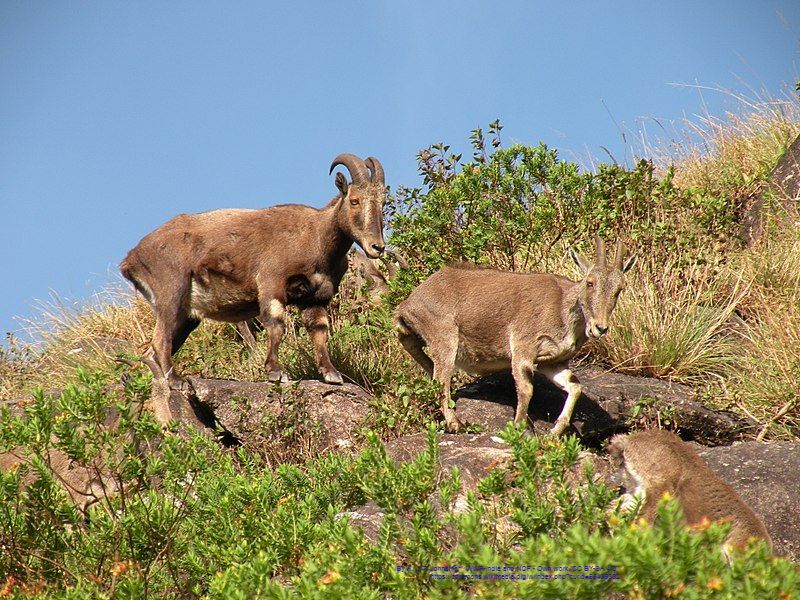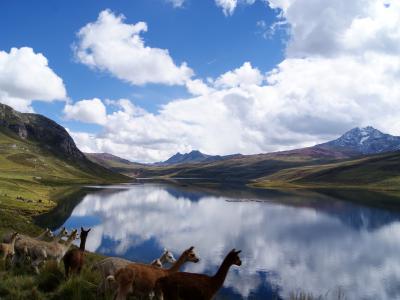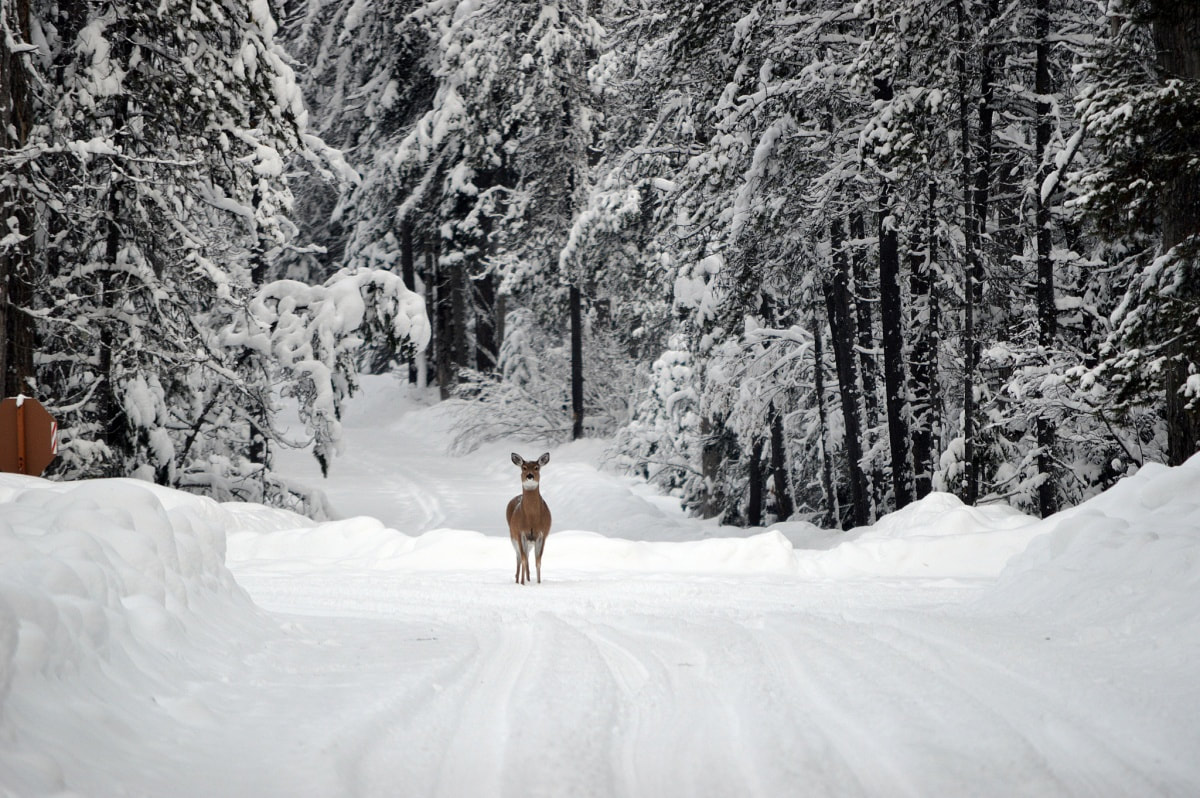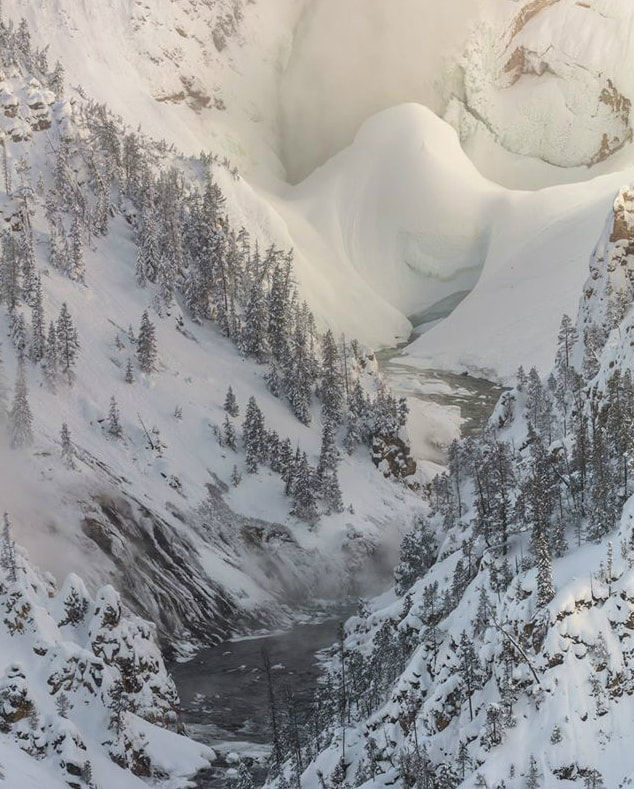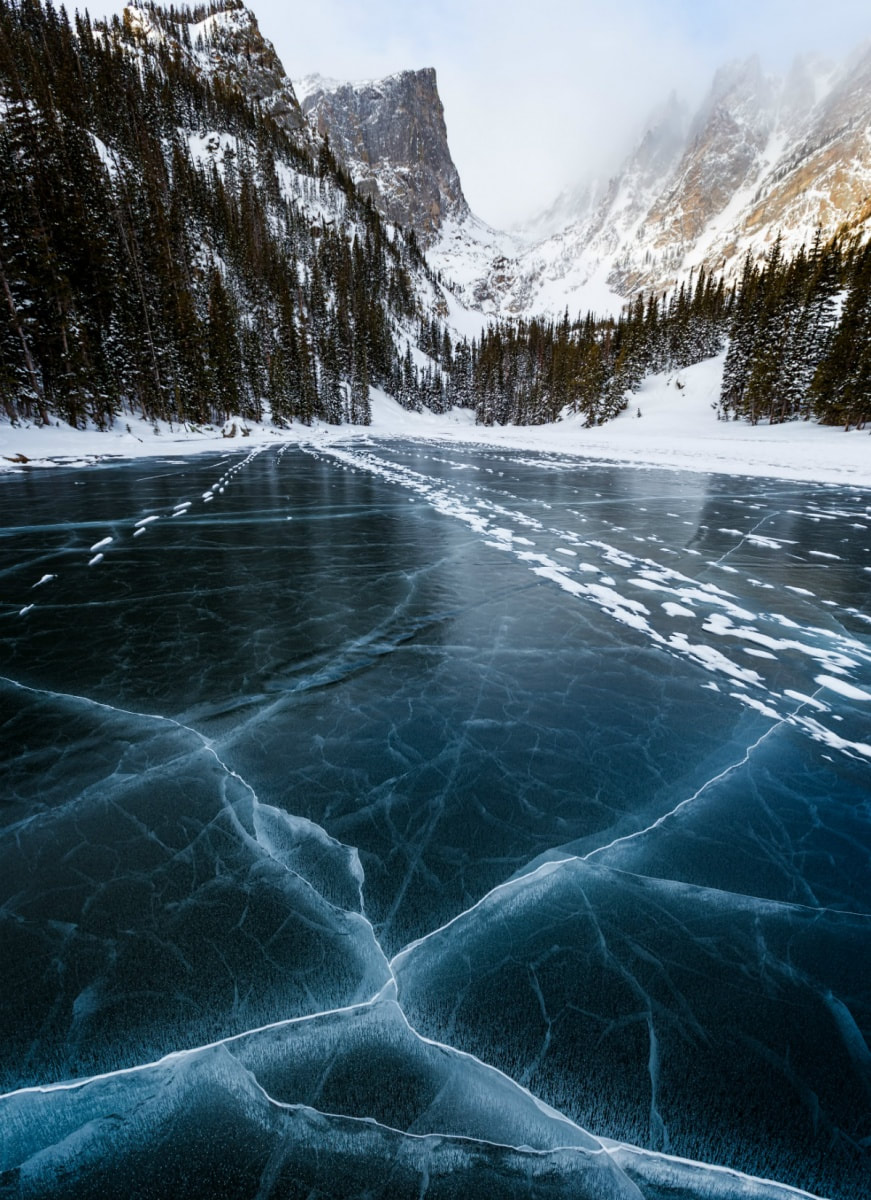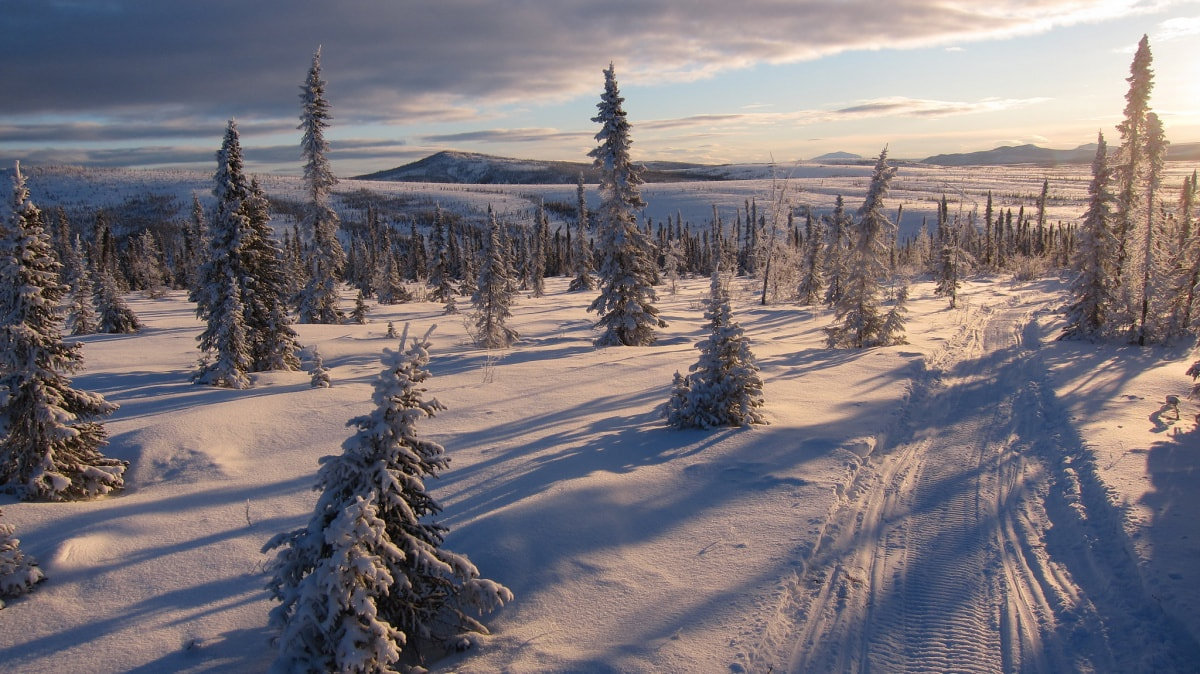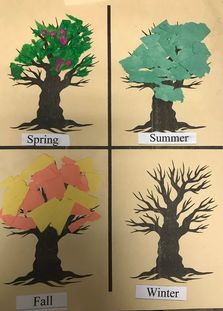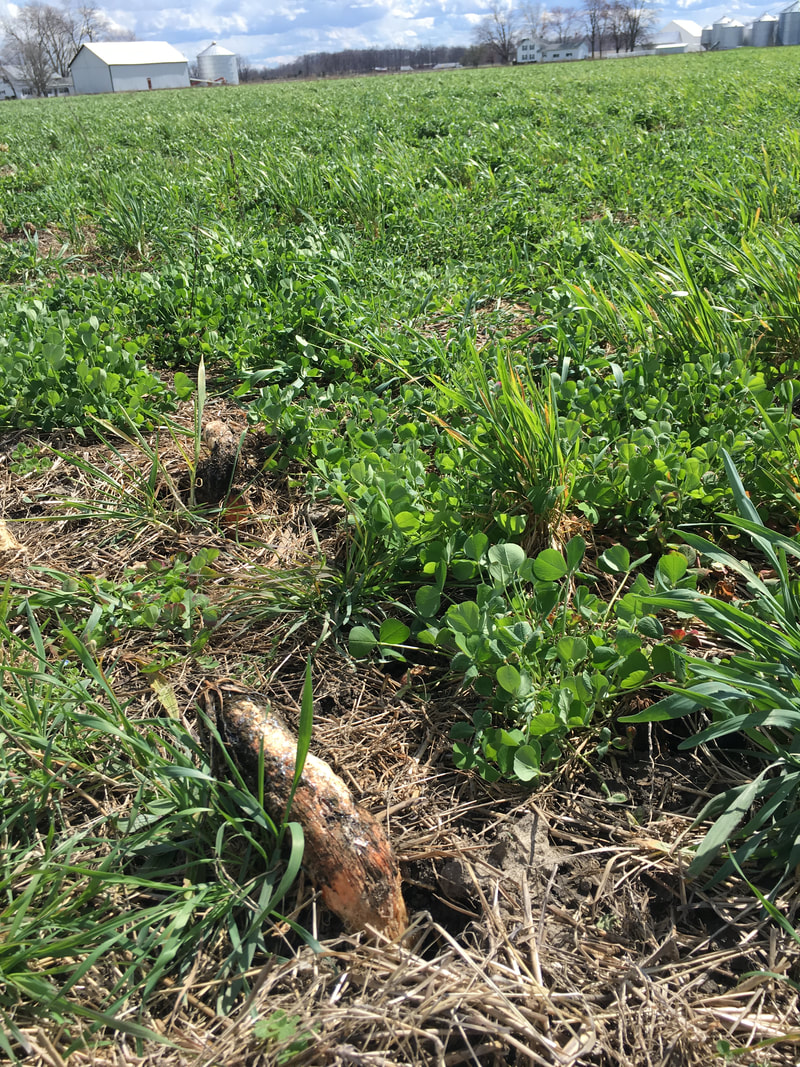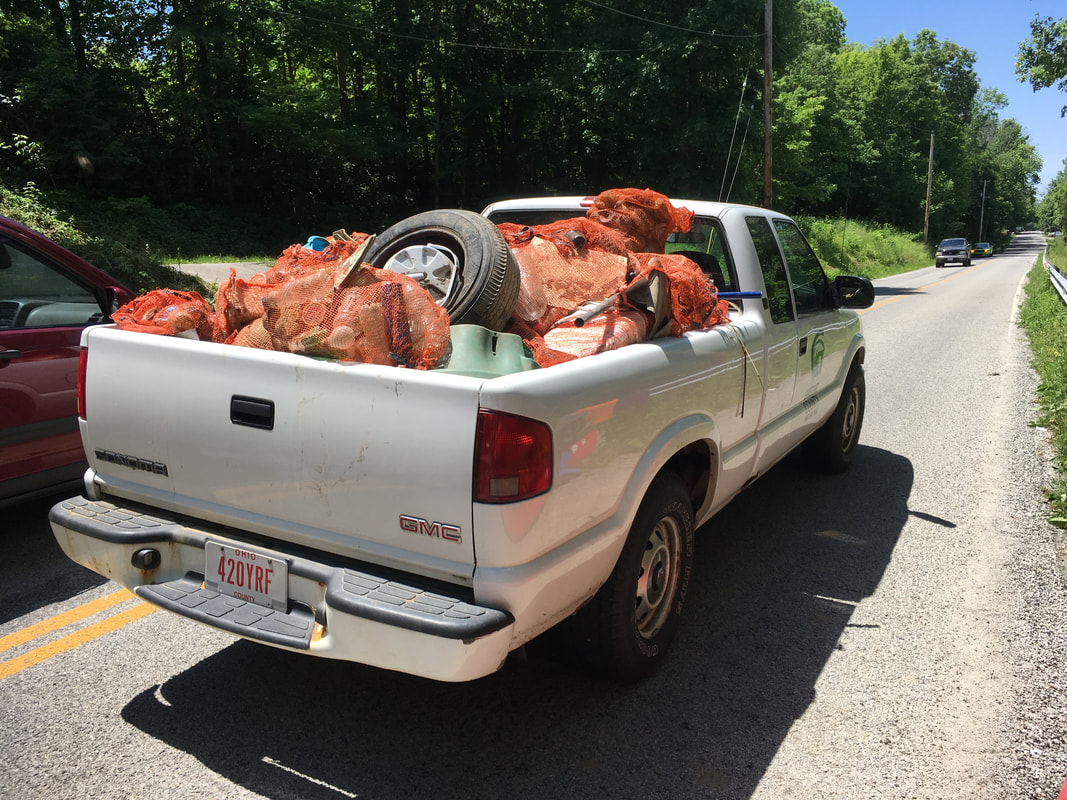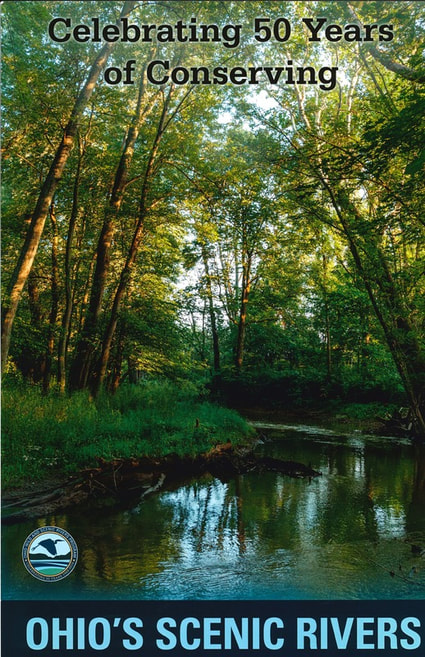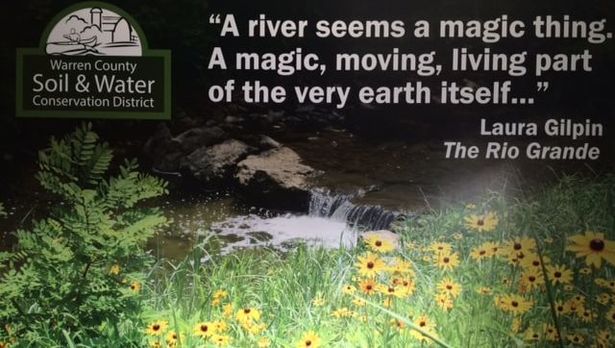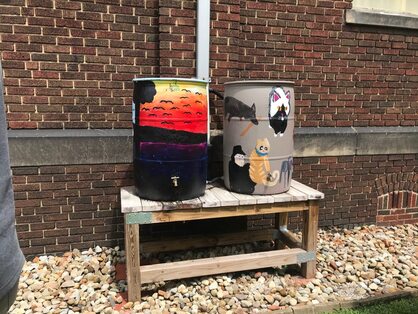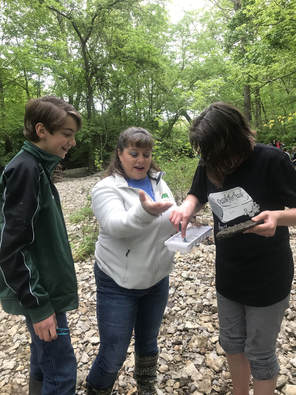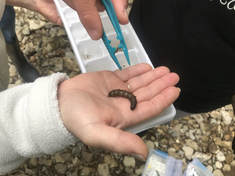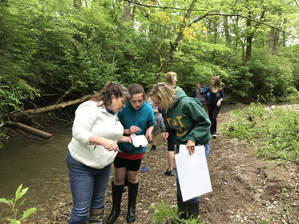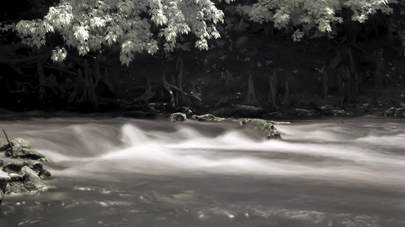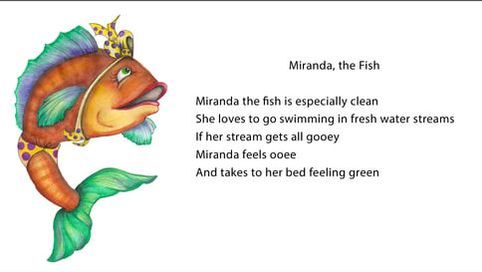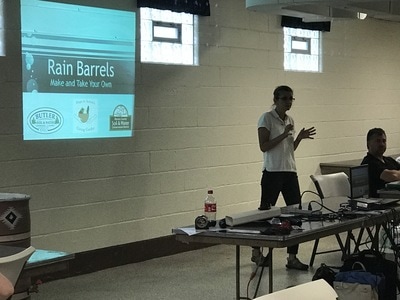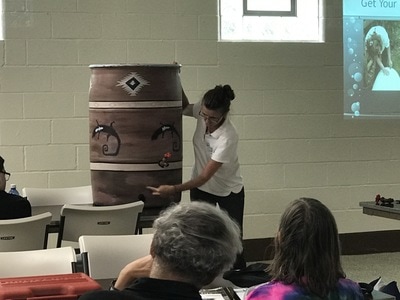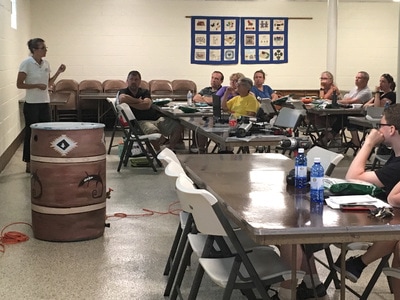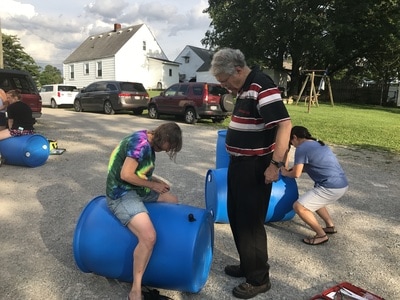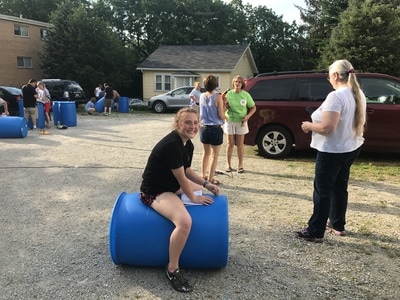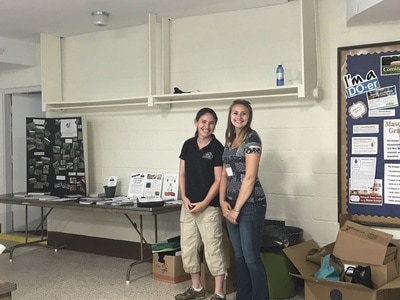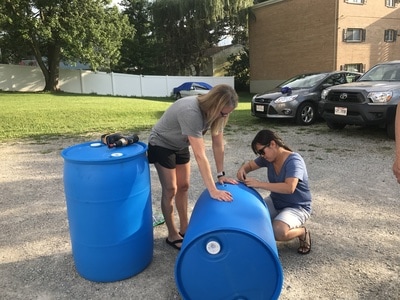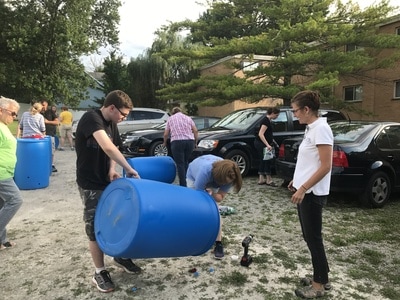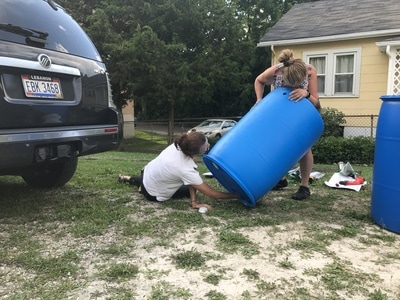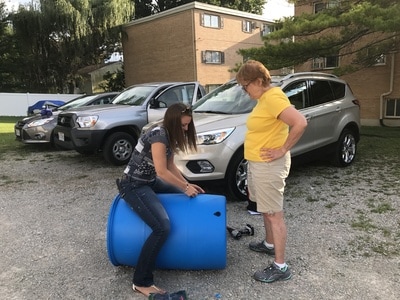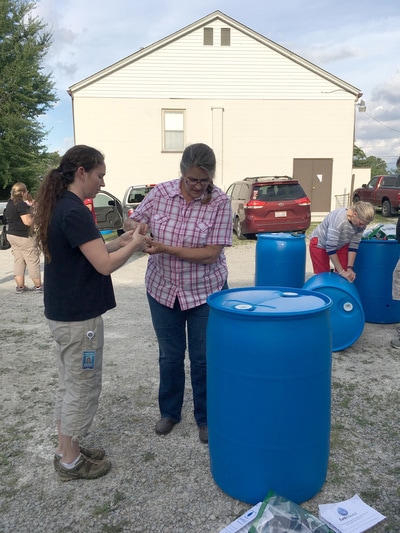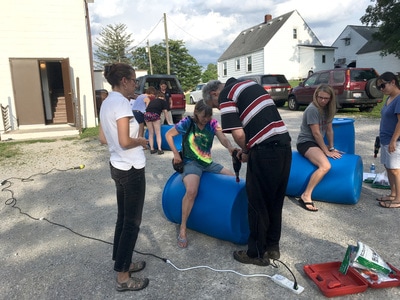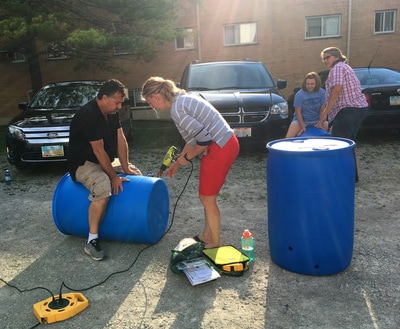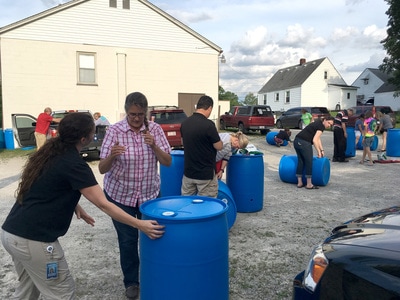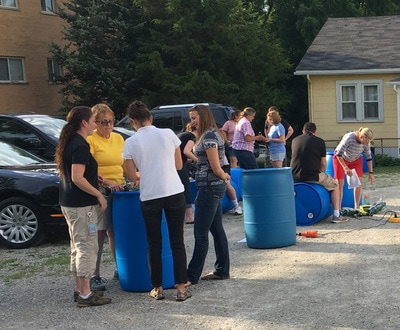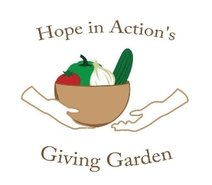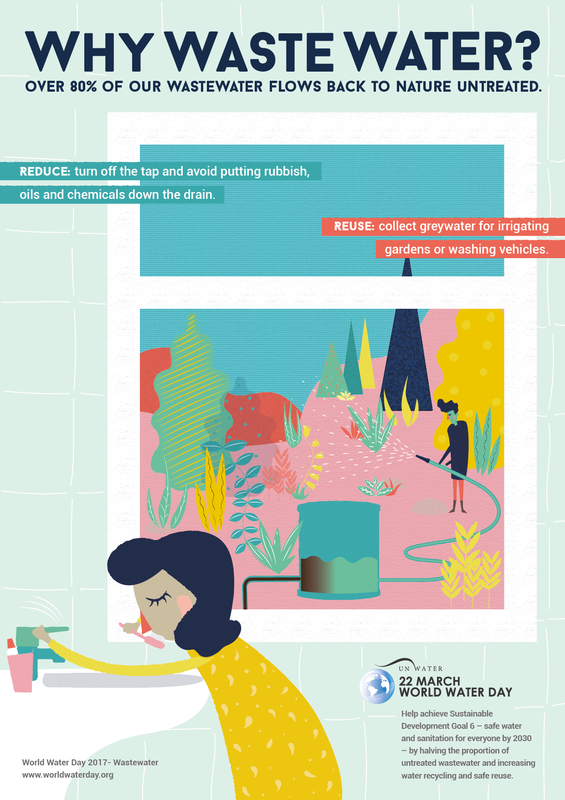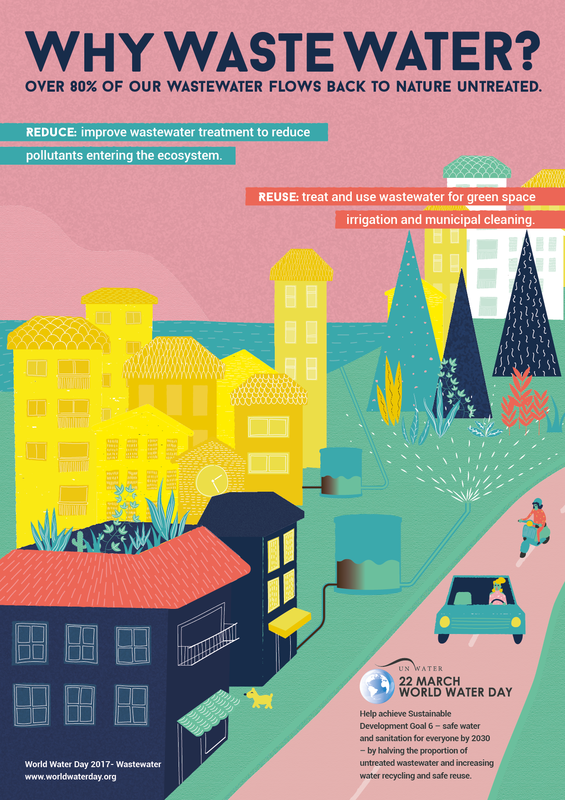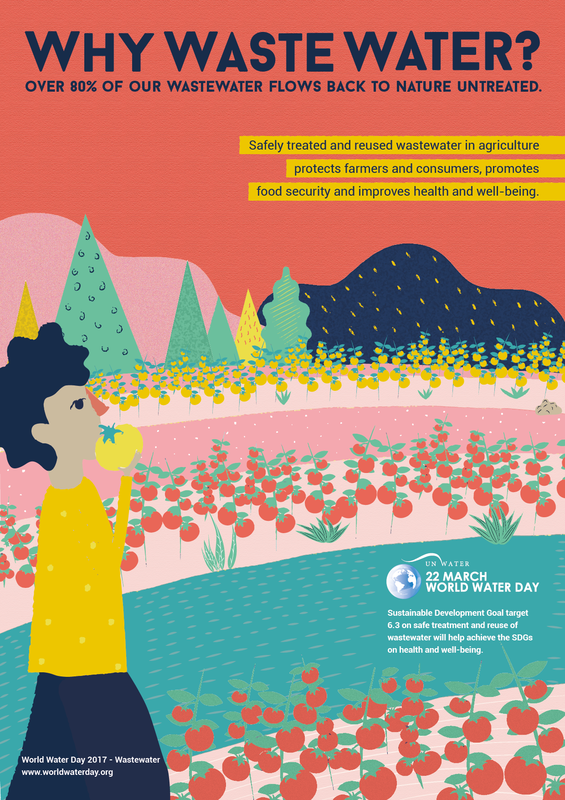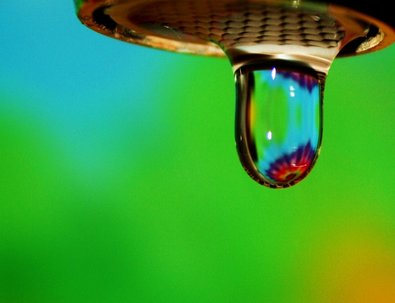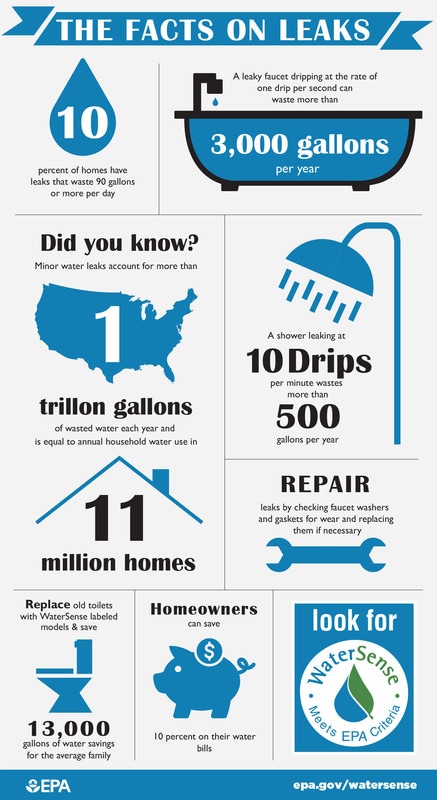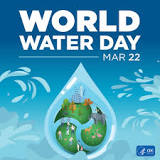 Coming up this month, on March 22, people around the planet will recognize World Water Day! World Water Day is about taking action to tackle the water crisis. Today, there are over 663 million people living without a safe water supply close to home, spending countless hours queuing or trekking to distant sources, and coping with the health impacts of using contaminated water. (http://www.worldwaterday.org/) This year’s theme is ‘Water for Peace’, which focuses on the critical role water plays in the stability and prosperity of the world. When water is scarce or polluted, or when people have unequal or no access, tensions can rise between communities and countries. More than 3 billion people worldwide depend on water that crosses national borders. Yet, out of 153 countries that share rivers, lakes and aquifers with their neighbors, only 24 countries report having cooperation agreements for all their shared water. As climate change impacts increase, and the global population grows, we must unite around protecting and conserving our most precious resource. By working together to balance everyone’s human rights and needs, water can be a stabilizing force and a catalyst for sustainable development. World Water Day is a United Nations (UN) observance coordinated by UN-Water. Every year, it raises awareness of a major water-related issue and inspires action to tackle the water and sanitation crisis. Did You Know?
Learn more at www.unwater.org
0 Comments
Caring For Our Watersheds empowers high school students to imagine, develop and create solutions in their local watersheds. CFW is both an environmental proposal contest and a project funding opportunity for high school students. The program promotes watershed awareness and stewardship, values student ideas and offers support when turning theoretical ideas into action. Caring For Our Watersheds fits in perfectly with your STEAM curricula and is very compatible with project-based learning.
Students are asked to identify an environmental concern in their local community and write a 1,000-word proposal about how they would fix the problem. Proposals are due January 14th and will be reviewed by a panel of judges to narrow down to a top 10. The top 10 students will then receive money (up to $1,000) and mentorship to implement their idea. After implementation, students will come to the final event to present their solutions to a panel of judges and win cash prizes. Schools also receive matching prize monies. For more info, please check out www.CaringForOurWatersheds.com and for specific Ohio info, go to www.CaringForOurWatersheds.com/usa/ohio. If you would like to schedule a classroom presentation about the program, please contact our Education Specialist! [email protected] Water Supports All Life! That is the message from Dagmar the Dragonfly, and she is ready to fly into your classroom or visit your event to help spread the word! Our education team is always looking to expand how we engage with audiences of all ages to teach about the importance of water quality. Check out the video for a sneak peek at what Dagmar has been up to, and contact our Education Specialist Melissa to schedule a Dagmar the Dragonfly program!
The Warren County Soil and Water Conservation District has gained a new team member: Maryann the freshwater mussel. Maryann is very passionate about the water quality of her river because she is a filter feeder! If the water quality in her river is poor, Maryann will be negatively affected by a toxic diet. Freshwater mussels help keep our rivers clean, making them vital to the aquatic ecosystems in Ohio. According to the U.S. Fish and Wildlife Service, 11 freshwater mussel species have become extinct, and 46 more are struggling on the endangered species list. The Ohio river basin, encompassing 14 states and over 25 million people, is home to 41% of freshwater mussel species native to North America. Our streams and rivers empty into the basin, eventually emptying into the Mississippi River and the Gulf of Mexico. Freshwater mussels filter feed anything and everything we dump into our rivers, causing mussel species in Ohio to be disproportionately affected due to dense populations of mussel species. More specifically, the Little Miami River holds 36 species of freshwater mussels, including two threatened species. Not only are mussels threatened by water pollution, they are also fighting for resources with the invasive Zebra Mussel species. Zebra mussels are native to Eurasian freshwater bodies, but spread through dumping ballast water into the Great Lakes by ships from Europe. Zebra mussels thrived in this new environment with no natural predators, allowing them to spread rapidly across the country. Native mussel species are reducing in number due to these invasive mussels, causing a decline in overall biodiversity in our rivers. Freshwater mussels are vital for our rivers’ ecosystem filtration, but many species are declining in population due harvesting for shiny buttons, and nutrient rich sea food in the past. Human impact on the freshwater mussel population can be greatly reduced by keeping our rivers clean, helping to reverse the negative affects of previous harvesting. According to the Ohio River Foundation, our river is a source of drinking water for more than five million people. Without freshwater mussels digesting harmful bacteria such as E. coli, our rivers would become very dirty. Article written by WCSWCD Intern Abbey Raison It is incredibly important that we all do our part to prevent water pollution in our river and consume fewer mussel products to protect the native species of freshwater mussels. You can adopt a mussel just like Maryann! Visit https://secure.donationpay.org/ohioriverfdn/adopt.php to adopt the mussel of your choice, and help the Ohio River Foundation protect the freshwater mussel population. According to the Ohio River Foundation website, "The donors of the Adopt a Mussel program provide much needed funds for food, aquariums and other supplies needed to care for and house these important conservation ambassadors for our Mussels in the Classroom program." These education initiatives align with those of Warren County SWCD and we are proud to support water quality education! For questions regarding Warren County Soil and Water Conservation District programs and/or technical assistance on water or soil questions, visit http://warrenswcd.com or call, 513-695-1337.
Additional Resources:
World Water Day – March 22, 2019 Water is the building block of life. For some, it’s easy to take water for granted..."it just comes out of the faucet anytime you want it." Yet around the globe, there are people who don’t have access to clean, safe drinking water. March 22, World Water Day, is dedicated to drawing attention to the water related issues that affect humans in almost every country. As created by the United Nations, the goal of World Water Day is to bring aide to people who are truly in need. Try to reduce your water footprint: https://nationaltoday.com/world-water-day/ Earth is the only known planet in our solar system that humans can live on. No other planet has oceans, Earth is also our only known planet to have bodies of liquid water on its surface and enough oxygen to comfortably breathe. Because we have so much water, Earth is is also referred to as the Blue Planet. The oceans combined with the atmosphere makes our planet look blue from outer space. About 71 per cent of the Earth's surface is covered with water. Earth is the only planet where water can exist in liquid form on the surface. Less than one percent of Earth's water is drinkable. Most of Earth's water is salty (~ 97%) and over 2/3 of Earth's freshwater is frozen. Earth is the fifth largest planet and the third planet from the Sun. What is potable water? Water that is suitable or safe for drinking. Water is not distributed evenly across the Earth. Water can be found in oceans, lakes, rivers, glaciers, underground (ground water), in soil and in Earth's atmosphere. A molecule of water can remain in the ocean for thousands of years. A molecule of water can remain in the atmosphere for as short a time as just a few days. An estimated 780 million people live without clean, accessible drinking water. Drinking contaminated water can lead to a host of life threatening diseases. Although this may seem like a third world problem, Flint, Michigan showed us that water problems even plague the United States. Our wildlife also require access to clean water. Every year, countless animals die as a result of water pollution. Pollution can occur in many ways, from physical litter to wastewater and chemical runoff, which causes the water to become toxic to the animals that depend on it for drinking and habitation. Many of the environmental problems we are coping with are intertwined — such as climate change and ecosystem degradation are related to and sometimes direct causes of water pollution, floods and droughts. — https://nationaltoday.com/world-water-day/ Project WET and Healthy Water Healthy People Teaching people to understand and value water, promoting water conservation and protection for all: https://www.projectwet.org/ ODNR Division of Wildlife Aquatic Education: http://wildlife.ohiodnr.gov/education-and-outdoor-discovery/aquatic-education ODNR Division of Wildlife Conservation Education: http://wildlife.ohiodnr.gov/education-and-outdoor-discovery/conservation-education-project-wild USGS All About Water: water.usgs.gov/edu/ 2019 Caesar Creek Lake Calendar of Events:
parks.ohiodnr.gov/portals/parks/PDFs/things_to_do/naturalists/USACECaesarCreek2019.pdf #MountainsMatter: International Mountain Day 2018 Theme Mountains matter yet they are often forgotten. Mountains play a vital role in providing essential "goods and services", especially water, to our planet. Mountain ecosystems are centers of biological diversity. These ecosystems, however, face severe threats from unsustainable land use practices (ex. overgrazing or non-conservation agriculture), illegal wood extraction, development of large-scale infrastructure (dams, roads) and unsustainable natural resource projects (fossil fuels, mining, & increased hydrocarbons). Our human well-being and livelihoods cannot be sustained without healthy ecosystems. Mountains also provide vulnerability in the "face of climate change", People living among mountains face subsistence challenges brought about by elevation, rough topography and even severe climate. https://adaptation-undp.org/projects/mountain-eba "Going, Going, Gone" - Glacier National Park Photo by Marta Farrell "Glacier National Park continues to lose its glaciers as global temperatures rise. Initially, this park had about 150 glaciers when it was founded in 1910. "Today, only 26 still meet the 25-acre threshold to be called a glacier." Credit: Jinrui Qu/CC-BY-SA-2.0 #MountainsMatter for Water: Think of mountains as the world’s 'water towers’, providing between 60-80% of all freshwater resources for our planet. Reliable resources indicate that glaciers in mountain ranges around the world are retreating and disappearing due to climate change. As many as 600 glaciers have disappeared completely over past decades, affecting water supplies relied on by billions living downstream. Five Thousand Miles of Wild; "It's More than a River, it's our way of life." https://www.5000miles.org/ #5000 Miles of Wild In 2018, we celebrated the 50th Anniversary of the Wild & Scenic Rivers Act. We continue this celebration in 2019 as tribute to the 50th Anniversary of the Little Miami River being named a State and National Scenic River. http://watercraft.ohiodnr.gov/Portals/watercraft/pdfs/maps/srLittleMiami.pdf #MountainsMatters for Disaster Risk Reduction as climatic variations are triggering disasters. Avalanches, mudflows and landslides are tumbling downstream, stripping bare forests, flooding communities and populations. #MountainsMatter for Tourism: Mountain destinations attract roughly 15-20% of global tourism; these are areas of important heritage, knowledge and cultural diversity, . Such tourism has potential to affect or foster economic development especially in remote and isolated regions. Unfortunately, many mountain communities are not benefiting and still live in poverty. #MountainsMatter for Food: Mountain regions are important centers of agricultural biodiversity; they are "home to many of the foods that come to our table"...rice, potatoes, quinoa, tomatoes and barley. Sadly, such regions are home to some of the hungriest peoples in the world given a high vulnerability to food shortages and malnutrition; climate change is directly affecting mountain agriculture. #MountainsMatter for Youth: Despite magnificent landscapes, rural life in mountainous regions can be "tough", particularly for the youth; abandoning their villages in search of employment elsewhere has lead to an absence of young people. This directly increases labor shortages. Consequently, migration from mountain regions has lead to an increase in abandoned agricultural, land degradation to even forest fires. Consequently, many cultural values and ancient traditions are lost. #MountainsMatter for Indigenous Peoples: Many mountainous areas host ancient indigenous communities that often posses and maintain unique knowledge, languages and traditions. Mountain peoples have developed unique land-use systems; they posses a wealth of knowledge and strategies that have accumulated over generations, including how to adapt to climate variability. #MountainsMatter for Biodiversity: Half of the world’s biodiversity hotspots are concentrated in mountains where approximately 25% of terrestrial biological diversity is supported. Mountains are home to many rare wildlife such as gorillas, snow leopards, the majestic tahr and strikingly, beautiful plants such as orchids and lobelias. International Mountain Day is an occasion to create a large social movement that can bring mountain issues "at large". Take a "step-up" and raise attention to mountains. #MountainsMatter
"Human wellbeing and livelihoods cannot be sustained without healthy ecosystems." UNITED NATIONS DEVELOPMENT PROGRAMME https://adaptation-undp.org/projects/mountain-EbA Some of the many "Public Lands to Explore in Winter" See: https://www.doi.gov/blog/20-public-lands-explore-this-winter Gallery Photos by Marta Farrell Seasons in the Smokies: https://www.nps.gov/media/photo/gallery.htm?id=28D901AE-1DD8-B71C-078D04CCD4FBAFBC Glacier National Park in Montana Photo above by Bill Hayden, National Park Service If you love snow, Mother Nature blankets the landscape in white at Glacier National Park. As the snow accumulates in Glacier, snowshoeing and skiing are among some of the favorite recreational activities in the park along with watching the wildlife come out to play. Glacier National Park Gallery Photos by Marta Farrell Yellowstone National Park Photo above by the National Park Service Winter at Yellowstone National Park indicates fewer crowds, frigid temperatures, and steaming geyser basins, hibernation or even migration. Skis, snowshoes and snowmobiles are often the primary modes of transportation as roads close, rivers and lakes freeze and snowstorms transform the park. One of the most amazing winter sights at the park is the ice dam at Lower Falls. Often growing over 100 feet tall, it’s known as an "astounding natural spectacle". Yelllowstone N.P. Gallery Photos by M.J. Farrell and Marta Farrell Starry Night: The Milky Way glows in the sky over a geologic formation known as Monument Rocks in Gove County, Kansas. The Milky Way is best viewed on moonless summer nights, far from the light pollution created by cities and towns. Astronomers believe our galaxy contains about 200 billion stars. — Travis Heying / The Wichita Eagle via AP Year in Space Pictures - 2018: https://www.nbcnews.com/mach/science/year-space-pictures-2018-ncsl950631?utm_source=Sailthru&utm_medium=email&utm_campaign=Morning%20Rundown%20Dec%2031&utm_term=Morning%20Rundown Geologists create a basic unit called a formation to classify and map layers of rock. Thus, a formation is a rock unit that is distinctive enough in appearance that a geologic mapper can tell it apart from the surrounding rock layers; also, the rock formation must be thick enough and extensive enough to plot on a map. "Formations are given names that include the geographic name of a permanent feature near the location where the rocks are well exposed. If the formation consists of a single or dominant rock type, such as shale or sandstone, then the rock type is included in the name." - By Christine Wilkerson, Utah Geological Survey "What is A Formation?" Rocky Mountain National Park in Colorado Photo above by Carl Finocchiaro "Cracks in Dream Lake create a gorgeous but perilous, natural tapestry at Rocky Mountain National Park." Always test ice first before walking on it; never take chances when walking on ice. In the winter, enjoy site-seeing, watching wildlife, sledding, snowshoeing, cross-country skiing, or hiking while exploring Rocky Mountain’s spectacular mountainous environments. Iditarod National Historic Trail in Alaska Photo above by Kevin Keeler, Bureau of Land Management. Encompassing a 1,500-mile system of winter trails, the Iditarod National Historic Trail initially connected ancient Alaska Native villages and opened up Alaska for the gold rush; it continues to play a vital role for travel and recreation. This trail is maintained by the Bureau of Land Management and it is often identified with the famous annual Iditarod - sled dog race. This annual race starts each year in March. There are upmost challenges the racer and the 21-dog team face given harsh conditions across rugged but beautiful Alaskan terrain. Meanwhile, dog mushing is the traditional Alaska winter transportation. Dogsledding, or the practice of a musher guiding a team of dogs pulling a sled over ice and snow, may serve multiple purposes. "Whether it’s a casual run along public recreational trails, racing against competitors, or hauling supplies, public lands have much to offer." -https://www.blm.gov/programs/recreation/recreation-activities/alaska
Ever wanted to explore your local stream, but didn’t know exactly where and how? This summer Warren County SWCD are hosting stream encounters where residents can enjoy their local streams through guided educational opportunities and cleanups. While participating in beautification efforts, you will also learn about how we monitor for stream health. To register, go to: https://www.warrenswcd.com/stream-encounters.html Check out these Warren County Events: Harmon Park Stream Encounter - Tue, July 10, 10am – 12pm Location: Harmon Park, 300 S East St, Lebanon, OH 45036, USA (map) St. Susanna Stream Encounter - Wed, August 1, 10am – 12pm Location: St. Susanna Catholic Church, 616 Reading Rd, Mason, OH 45040 (map) Summer is the ideal time to connect with nature or #EscapetheIndoors. During this Great Outdoors Month explore different activities that you can enjoy outdoors. Enjoy planing a fishing, boating, camping, hiking or even biking adventure! https://www.greatoutdoorsmonth.org/ Event Planning: www.greatoutdoorsmonth.org/activites-and-events Volunteer Stewardship Opportunities: https://www.warrenswcd.com/volunteer-opportunities.html www.greatoutdoorsmonth.org/stewardship Earth Team Volunteer: www.nrcs.usda.gov/wps/portal/nrcs/main/national/people/volunteers/ National Trails Day As of June 2, kids and families can download the new Junior Ranger "Let's Go Fishing!" Activity Booklet or pick up printed copies at a growing number of parksover the summer. Follow #GoFishingInParks. Warren County Ohio Park District: www.co.warren.oh.us/parks/ 2018 Caesar Creek Events: parks.ohiodnr.gov/portals/parks/PDFs/things_to_do/naturalists/CaesarCreek2018.pdf Above Photos taken at Caesar Creek Nature Center featuring our wonderful host - Sarah Blair/ODNR, Ohio Certified Volunteer Naturalists, Franklin High School Environmental Classes, Franklin HS Environmental/Biology Teacher Mr. Keith Vinson - 2017 Warren County SWCD Educator or the Year, www.caesarcreekstatepark.com/nature-center.html OHIO'S SCENIC RIVERS Celebrates 50 Years of Conserving Rivers, lakes and oceans - our blue spaces benefit both our physical and mental well-being. We rely on rivers for clean drinking water and as places of recreation and rejuvenation. Even the sound of moving water has a calming and restoring effect on the mind. Whether you are looking for a peaceful picnic or rest spot by a babbling brook, a scenic river-front hike or a place to paddle, you can find activities along Wild and Scenic Rivers that contribute to your good health. Wild Scenic Rivers Health & Safety: www.rivers.gov/wsr50/files/health-safety-infographic.pdf Roughly 65% of our nation’s drinking water comes from rivers and streams. Toxins that contaminate water can harm the human body, meaning that "good health starts with good water chemistry".
Many plants and some animals, such as freshwater mussels, can filter water by removing harmful chemical compounds. Since humans need assistance making sure the water we ingest is clean, protect your own health by understanding the ecosystems responsible for your clean water and helping your local watershed group clean up litter - thus removing water pollutants. Warren County SWCD Educational Services and Programs: https://www.warrenswcd.com/education.html Drinking water comes from streams, rivers lakes and ground water (aquifers). Protecting these water sources is key to sustaining safe drinking water supplies. When the water in our rivers, lakes and oceans becomes polluted, it endangers wildlife and people. Pollution makes our drinking water unsafe and threatens the waters where we enjoy swimming, fishing and recreational activities. For additional "Water Topics", EPA research supports water protection efforts under the Clean Water Act and Safe Drinking Water Act. THOMAS C. SPELLMIRE WATER CONSERVATION TRAILER Protect Sources of Drinking Water Roles in Source Water Protection Protecting source water is everyone's responsibility. Everyone has a role, including:
Install a Rain Barrel: Store rainwater from rooftops that can be used on lawns and gardens. Stormwater includes rainwater that runs off hard surfaces and carries pollution to our streams. Individuals can further take action to protect their water, for example by:
Water quality is commonly determined by sampling a stream for macroinvertebrates.
The Little Miami River watershed is located in southwestern Ohio. It drains a total of 1,758 square miles and flows through all or part of 11 counties. Major municipalities partially or fully in the watershed include Xenia, Beavercreek, Wilmington, and Cincinnati and some of its suburbs. See further Ohio EPA studies on the Little Miami River: http://epa.ohio.gov/dsw/tmdl/ LittleMiamiRiver.aspx http://epa.ohio.gov/portals/35/tmdl/Lower_LMR_Factsheet.pdf Exploring Watershed Geography USGS (U.S. Geological Survey) provides science about the natural hazards that threaten lives and livelihoods; the water, energy, minerals, and other natural resources we rely on; the health of our ecosystems and environment; and the impacts of climate and land-use change. Their scientists develop new methods and tools to supply timely, relevant, and useful information about the Earth and its processes. www.usgs.gov/ Native Ohio Tree Species Suitable for Planting within 1,000 Feet of State Wild, Scenic and Recreational Rivers https://docs.wixstatic.com/ugd/19e2af_934d025960a743c6bb2987ae13cbccbe.pdf The most effective way to counter this increase in impervious surface is to protect and restore the riparian corridor or riparian buffer. Trees and wetlands play an important role in slowing the flow of water and filtering out the impurities prior to the run off entering the river. www.epa.gov/sourcewaterprotection/what-you-can-do-protect-source-water Meet Fred's Friend, Miranda!
Whether you are interested in saving water or saving money (or both!) installing a rain barrel to capture rain water runoff is a great idea! Several community members joined Warren County SWCD and Butler County SWCD for a hands on rain barrel workshop to learn how to install rain barrels on their property. Participants learned the value of rain barrels, and received technical assistance in drilling their barrels and utilizing their installation kits. Check out some of the fun! A special thanks to Mason Community Grange and Hope in Action's Giving Garden for hosting the event! To learn more about rain barrels, check out our Backyard Conservation Tips!
And stay tuned for future workshops to learn more about home conservation practices! World Water Day, on 22 March every year, is about taking action to tackle the water crisis. Today, there are over 663 million people living without a safe water supply close to home, spending countless hours queuing or trekking to distant sources, and coping with the health impacts of using contaminated water. (http://www.worldwaterday.org/) This year, the theme for World Water Day is wastewater, and issues surrounding pollution and nutrient loss. Reducing and reusing our wastewater by utilizing grey water for gardens, and for green spaces in urban areas can help conserve this valuable resource of water! Get the facts: Why waste water?
For educational tools and games about water sustainability, check out: http://www.games4sustainability.org/world-water-day-2017/ MARCH 20-26 "is Fix a Leak Week 2017"
sponsored by the U.S. Environmental Protection Administration (USEPA) https://www3.epa.gov/watersense/our_water/fix_a_leak.html |
Details
Author:
|
||||||||||||||||||||||||||||
|
|
Contact:PHONE: (513) 695 - 1337
EMAIL: [email protected] HOURS: Monday - Friday 7:30am - 4:00pm (except holidays) Connect:Warren County Soil & Water Conservation District Copyright © 2016
Warren SWCD Privacy Notice. Emails are serviced by Constant Contact. Constant Contact's Privacy Notice. |

